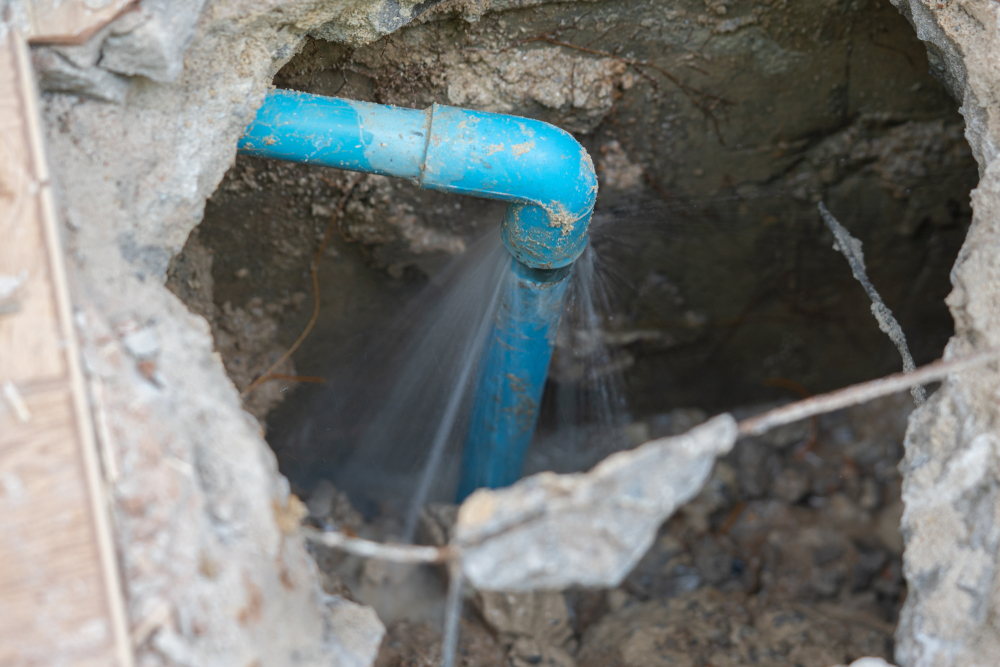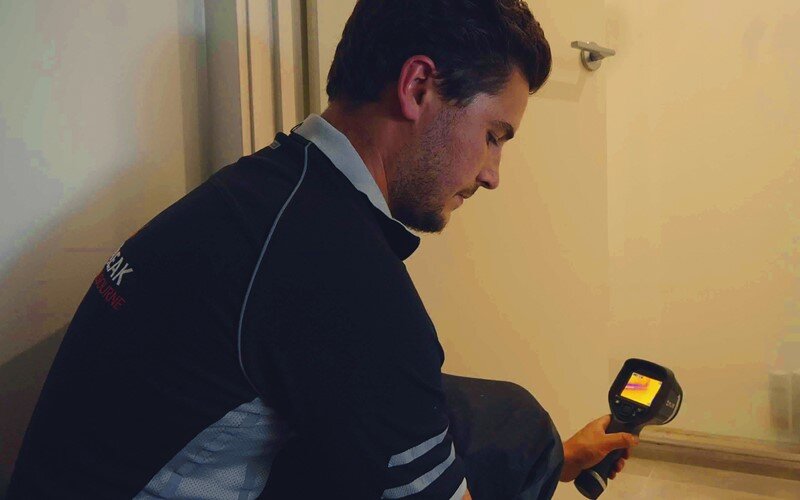Guide To Water Leak Detection In The House
Guide To Water Leak Detection In The House
Blog Article
The article author is making a few good points regarding Locating water leaks as a whole in the content beneath.

Early discovery of dripping water lines can minimize a prospective disaster. Some small water leaks may not be visible.
1. Analyze the Water Meter
Every house has a water meter. Inspecting it is a proven manner in which helps you discover leakages. For starters, shut off all the water sources. Ensure no one will flush, make use of the tap, shower, run the cleaning maker or dishwashing machine. From there, go to the meter and also watch if it will transform. Given that nobody is utilizing it, there must be no movements. That shows a fast-moving leak if it moves. Furthermore, if you discover no changes, wait a hr or more and also examine back once more. This means you may have a slow leakage that can also be underground.
2. Check Water Usage
If you find sudden adjustments, despite your intake being the exact same, it means that you have leaks in your plumbing system. A sudden spike in your bill shows a fast-moving leak.
A steady increase every month, also with the exact same behaviors, reveals you have a slow-moving leak that's also gradually intensifying. Call a plumber to thoroughly examine your residential property, specifically if you really feel a warm area on your flooring with piping beneath.
3. Do a Food Coloring Examination
30% comes from toilets when it comes to water intake. Test to see if they are running correctly. Drop specks of food color in the container and wait 10 mins. If the shade in some way infiltrates your bowl throughout that time without flushing, there's a leakage between the container and bowl.
4. Asses Outside Lines
Don't forget to inspect your outside water lines as well. Examination spigots by connecting a garden hose. Should water seep out of the link, you have a loose rubber gasket. Replace this and also make sure all connections are tight. If you have actually obtained a sprinkler system, it will assist get it skillfully examined and maintained every year. One small leak can lose tons of water as well as increase your water costs.
5. Inspect and Assess the Scenario
House owners should make it a behavior to examine under the sink counters as well as also inside cupboards for any bad odor or mold and mildew development. These two red flags suggest a leak so timely attention is needed. Doing routine examinations, even bi-annually, can save you from a significant issue.
If you understand your home is currently old, maintain a careful eye on your heaters, hoses, pipelines etc. Check for stainings and also compromising as a lot of home appliances and also pipes have a life span. They will also naturally weaken because of tear and also use. If you think leaking water lines in your plumbing system, don't wait for it to rise. Call a specialist plumber as soon as possible so you do not wind up with a dreadful mess in your house.
Early detection of leaking water lines can reduce a potential catastrophe. Some tiny water leakages may not be noticeable. Examining it is a surefire way that aids you discover leakages. One little leakage can waste lots of water as well as increase your water expense.
If you suspect dripping water lines in your plumbing system, do not wait for it to rise.
WARNING SIGNS OF WATER LEAKAGE BEHIND THE WALL
PERSISTENT MUSTY ODORS
As water slowly drips from a leaky pipe inside the wall, flooring and sheetrock stay damp and develop an odor similar to wet cardboard. It generates a musty smell that can help you find hidden leaks.
MOLD IN UNUSUAL AREAS
Mold usually grows in wet areas like kitchens, baths and laundry rooms. If you spot the stuff on walls or baseboards in other rooms of the house, it’s a good indicator of undetected water leaks.
STAINS THAT GROW
When mold thrives around a leaky pipe, it sometimes takes hold on the inside surface of the affected wall. A growing stain on otherwise clean sheetrock is often your sign of a hidden plumbing problem.
PEELING OR BUBBLING WALLPAPER / PAINT
This clue is easy to miss in rooms that don’t get much use. When you see wallpaper separating along seams or paint bubbling or flaking off the wall, blame sheetrock that stays wet because of an undetected leak.
BUCKLED CEILINGS AND STAINED FLOORS
If ceilings or floors in bathrooms, kitchens or laundry areas develop structural problems, don’t rule out constant damp inside the walls. Wet sheetrock can affect adjacent framing, flooring and ceilings.
https://www.servicemasterbyzaba.com/blog/how-to-detect-water-leakage-in-walls/

As an enthusiastic person who reads on Hacks to detect leaks, I think sharing that excerpt was sensible. Are you aware of somebody who is sincerely interested in the niche? Take a moment to promote it. I take joy in reading our article about Detecting hidden plumbing leaks.
Report this page